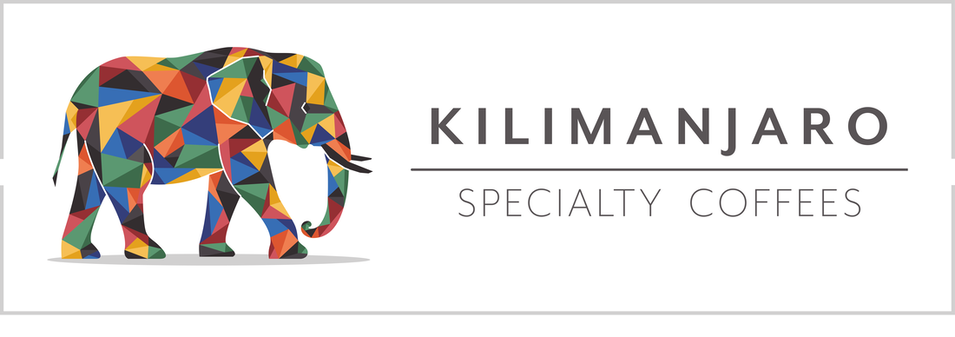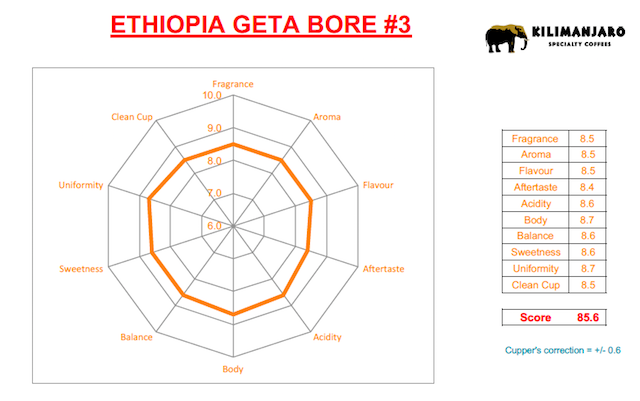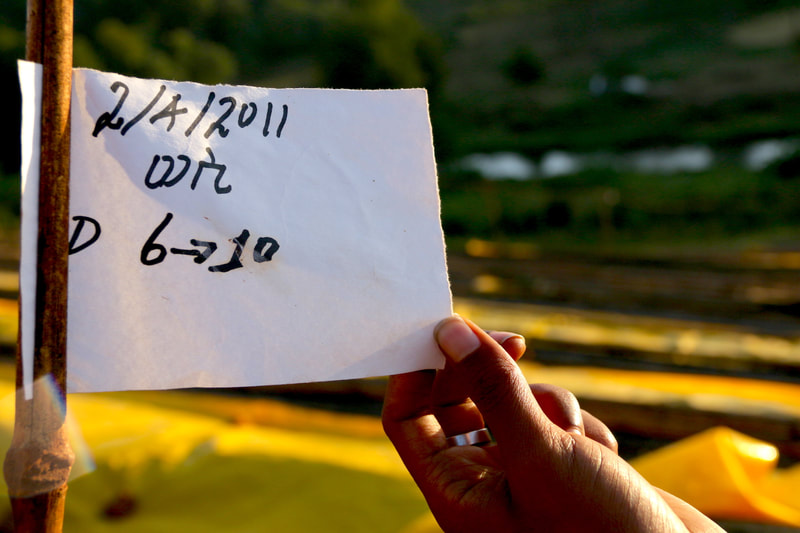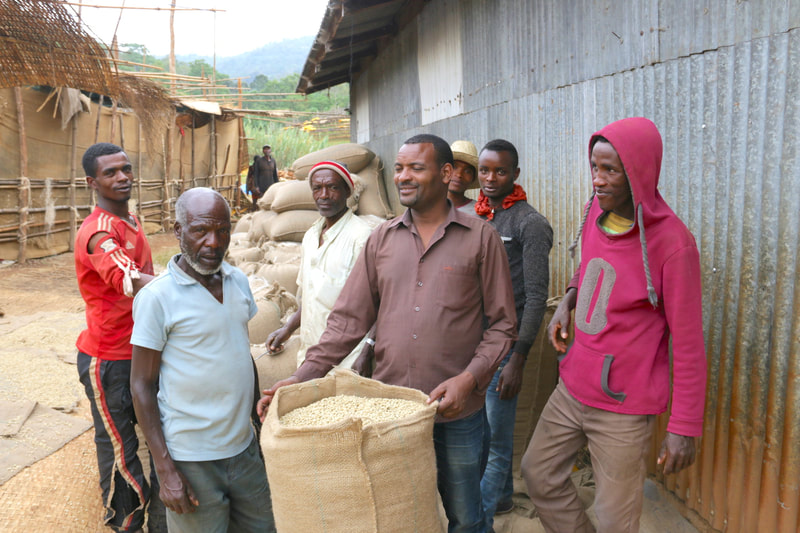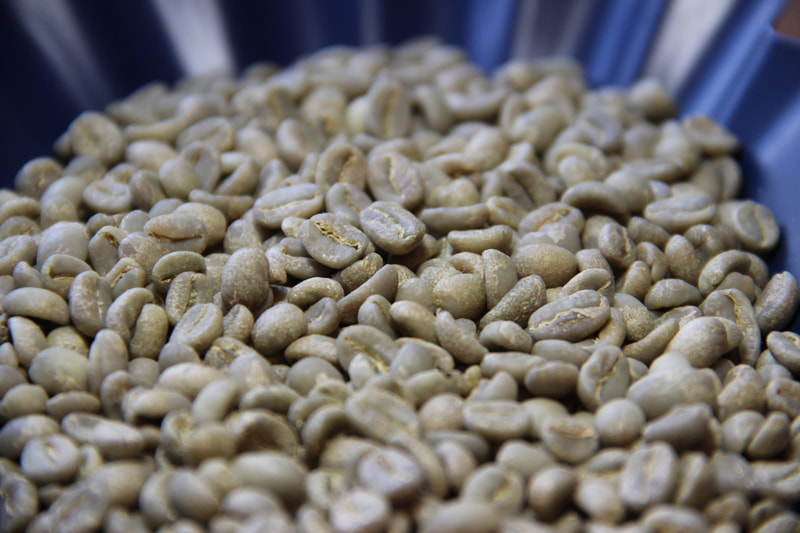ETHIOPIA GETA BORE LOT#3
General Information
|
Origin: Ethiopia
Region: Bore Woreda, Illubabor Cooperative: Geta Bore Washing Station: Geta Bore Cultivars: Metu Bishari Selection (including varieties: 74110, 74112, 74140, 74148 & 74165) Altitude: 1.700 1.850 masl Process: Washed with a single wet fermentation and sun-dried on African beds Harvest: December 2018 - February 2019 Grade: Specialty Washed Grade 1 Warehouse: Barcelona & Santiago Packaging: 60 Kg w/ GrainPro Score: 86 Notes: Jasmine, honey, passion fruit, melon Ikawa Roasting Profile: http://bit.ly/2ZtoPIz Preparation: Both espresso and filter |
TRACEABILITYGeta Bore is a cooperative located in the Illubabor Zone, next to Jimma, which is also part of the Kata Muduga Union Cooperative Society. Partnering with Kata Maduga has allowed us to develop the initiative to work directly at a cooperative level in different regions of southwestern Ethiopia.
The Union administers and coordinates the agronomists and managers for each of the 27 cooperatives which they work with, but also has an assigned business advisor who helps the cooperative manage its debt, reinvest in quality improvements in the factory and verifies the distribution of the income for all its members (coffee farmers). Geta Bore is a small and remote cooperative compared to other excellent cooperatives in southwestern Ethiopia regions. We have been impressed by the quality and cleanliness of its cup, as well as with its intense citric acidity. This area is of a lower relative altitude than others (1700 m), but perhaps due to the wooded environment in this part of Illubabor, its effect on the microclimate slows coffee ripening and increases grain density. ETHIOPIA, COFFEE AND DOLLARS: AN AFFAIR OF STATE
Ethiopia is an extraordinary and complex origin, probably the most complex of all. It is also a diverse and dispersed place to work. One must invest a lot of time travelling, cupping and researching lost pieces of information to understand the coffee industry through its culture, history, geography, economy and politics.
Coffee is so important for Ethiopia, that by itself supports the trade balance of a country of more than 100 million people. It is the main source of foreign currency income, reaching record sales of USD 882 million in 2017. In addition, it is estimated that the livelihood of 15 million people depend directly on coffee production. Since Ethiopian economy highly reliant on imports, its Trade Balance is permanently negative, this means there is a constant deficit of dollars or strong currencies in the public and private reserves. For this reason, there are many non-coffee related players involved in coffee exports, and so many others wanting to join. Approximately 40% of the export revenues are lost in the hands of unnecessary intermediaries or middle man, during the production and logistics processes. Since 2017, the coffee industry in Ethiopia has allowed the direct sales to importers by washing stations. Before, everything has to be marketed through the Ethiopia Commodity Exchange (ECX). The ECX is an equivalent to the Nairobi Coffee Exchange, but inefficient and poorly organized; where lots are mixed in large production areas, and therefore, traceability and quality are usually lost or degraded. About 90% of Ethiopian coffee is produced by small holder farmers, who deliver their cherries to the washing stations that are located closest to their farms. These washing stations are grouped into Cooperatives, where through a board of directors they elect their representatives. And the cooperatives are grouped into unions, which function as an "umbrella" organization, providing assistance for the cooperatives, washing stations and farmers, in the most important areas of: marketing, cultivation and production, financing, processing, logistics and exports. We have decided to work only with Unions of Cooperatives, and not with exporters through the ECX. This means that we have access to first-hand information when cupping and selecting lots, more transparency regarding the costs and finance of the Union, more traceability, less unnecessary intermediaries and greater socioeconomic impact for the small holder farmer. VARIETIES AND HEIRLOOMAccording to the Cambridge dictionary, the word "Heirloom" has the following meanings:
1.- valuable object that older members of a family have given to younger members of the same family for many years. 2.- a fruit, plant or seed of a type, which has existed for many years. From a botanical point of view, the definition of an heirloom variety establishes that this must be open-pollinated. Arabica coffee is a self-pollinated crop, so from the very beginning the definition of heirloom doesn’t apply to Arabica coffee. For many years in the coffee industry, the word Heirloom has been used as a generic term to describe one or a group of unknown cultivated varieties in a particular lot, farm or region, that over a long period of time has been planted and passed from a coffee farmer to the next. Since the Specialty Coffee movement started to rise in western countries, there was an obvious necessity for traceability and more information. Although the Jimma Agricultural Research Center (JARC), has been working since the 70’s in researching and developing new varieties, at the time, importers had very little information to describe the varieties of the coffees they were buying from Ethiopia. Today, thanks to scientists such as Getu Bekele, who have been studying Ethiopian wild and cultivated varieties for decades, we can learn, recognize and differentiate, two big groups of Ethiopian Coffee Varieties: the Regional Landraces and the JARC improved. There are between 6.000 to 10.000 Regional Landraces and the JARC has developed around 40 improved varieties, which has been distributed among farmers all over the country. These improved varieties address issues of CBD, leaf rust, cup quality and yielding, and today, are widely used all over the coffee growing regions in Ethiopia. For example, if we analyzed the Jimma Region, we can learn that the improved varieties of the area belong to the Metu Bishari Selection of 1974/75 including: 74110, 74112, 74140, 74148 & 74165 varieties. The Regional Landraces found in this area will include: Kuburi, Bedessa, Yawan and Dalacha among others. Also, there will be a specific and different set of improved varieties and Regional Landraces found in Yirgachefe/Sidamo, Harar, Gera and Walaga. |
THE PROCESS
GETA BORE CWS LOCATION
|
WHERE WE ARE
Barcelona, Spain Santiago, Chile Budapest, Hungary |
